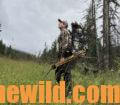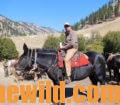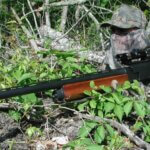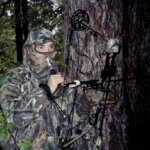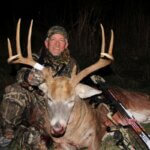Editor’s Note: Dudley McGarity is the general manager of BPI Outdoors, which owns CVA Muzzleloaders, Bergara Rifles and several other outdoor brands. McGarity has taken several elk with a muzzleloader as well as a custom rifle. But like many of us, McGarity always has had a dream of hunting a different way. He’s hunted in many states as well as in Africa, but his dream has been to one day hunt a bull elk on public lands with his longbow.
“Because I’d hunted quite a bit of public land a lot over the years, and I’d called in a number of bull elk that for one reason or the other didn’t get a shot, I felt I’d learned a few secrets that worked for me,” Dudley McGarity emphasizes.
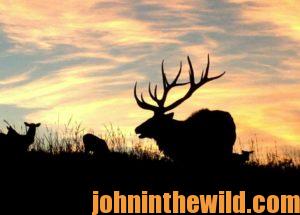 * “Call as little as possible. Most public-land hunters like to call and walk a lot, and the elk recognize and notice that.
* “Call as little as possible. Most public-land hunters like to call and walk a lot, and the elk recognize and notice that.
* “Get in as close as you can to a bull before you call to him. Ideally, you need to get close enough to see the bull before you begin calling to him. If you get really, really close to a bull before you start calling to him, often he will bugle as a spontaneous reaction. Then the elk will come and check out this cow that has wandered in close to him that he’s never heard or seen previously.
* “Realize that if you call from down in a canyon or off the side of a hill, that bull elk will start looking for the cow before you ever get close to him. When he doesn’t see the cow after a while, or he sees you, he’ll shut up and leave.
* “Remember that public-land elk have seen plenty of hunters, and they’ve heard a lot of calling. On private land, the elk see very-few hunters and hear far less calling than public-land elk do. For that reason, hunting public-land elk often feels like you’re hunting a completely-different animal than the elk you locate on private lands. We had moved to within 50 to 75 yards the elk that I took before I ever called to him.
* “Don’t carry binoculars with you when you elk hunt because they’re heavy – or at least I don’t. Most often too when you see an elk at a distance, if you try and make an effective stalk, and you’ve  got the right wind, more than likely, he may be gone by the time you reach his general area. But if you hunt in thick cover where you don’t need binoculars, and you can hear an elk often, then you can get in close without the elk hearing or seeing you before you start calling. Remember, I’m hunting with a longbow, so I know I’ll have to call the bull in very close to get a shot at 30 yards or less.
got the right wind, more than likely, he may be gone by the time you reach his general area. But if you hunt in thick cover where you don’t need binoculars, and you can hear an elk often, then you can get in close without the elk hearing or seeing you before you start calling. Remember, I’m hunting with a longbow, so I know I’ll have to call the bull in very close to get a shot at 30 yards or less.
* “Hunt thick cover to keep that thick cover between you and the bull. Then the bull probably thinks. ‘That cow is close to me, I know where she’s at, and I can’t see her, so I will walk through that cover and get a closer look.’ Or, that’s what I think that’s that the elk thinks.
“I’m so happy I can mark another item off my bucket list – hunting without a guide and taking a bull elk with my longbow.”
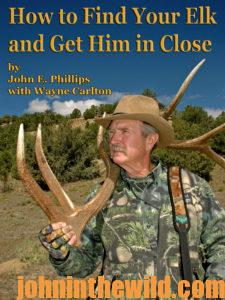 To learn more about hunting elk, check out John E. Phillips’ book, “How to Find Your Elk and Get Him in Close,” available in Kindle, print and Audible versions at http://amzn.to/17ENNqK.
To learn more about hunting elk, check out John E. Phillips’ book, “How to Find Your Elk and Get Him in Close,” available in Kindle, print and Audible versions at http://amzn.to/17ENNqK.

